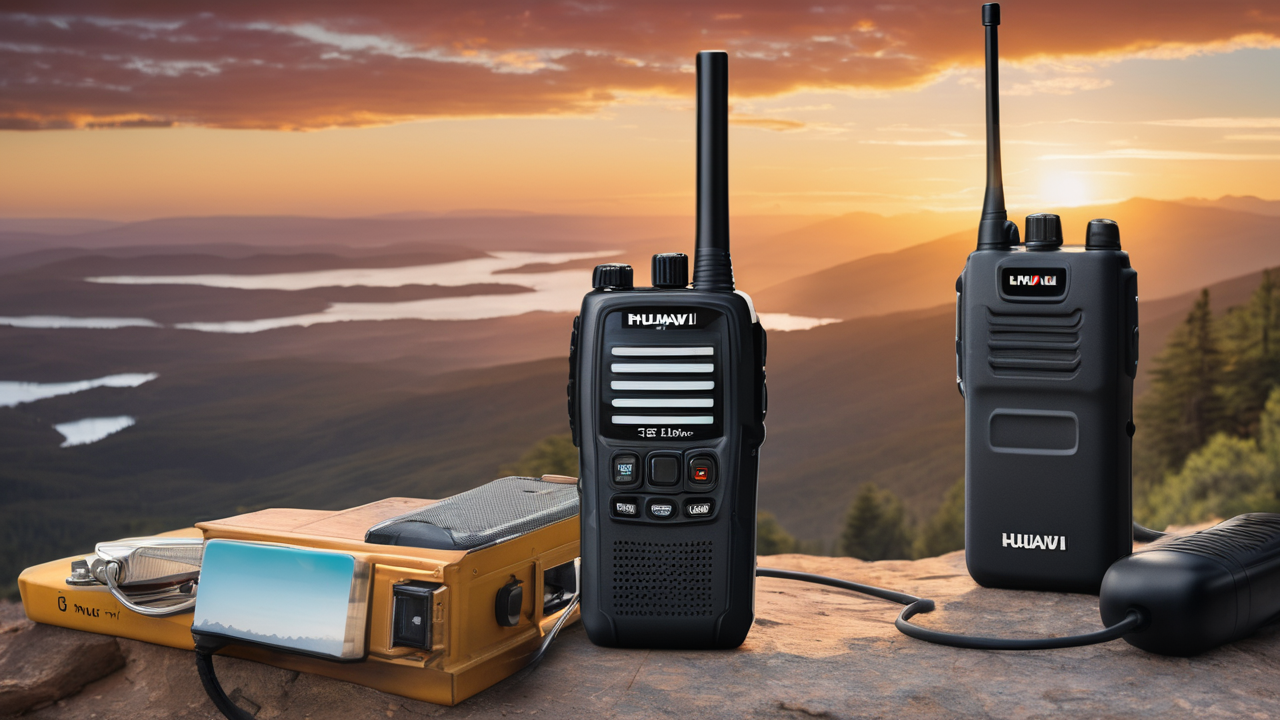Introduction to Long Range Walkie Talkie Technologies
Understanding the Basics of Long Range Communication Devices
Long range walkie talkies are vital tools for communication over large distances. They use radio waves to transmit voice signals. These devices work without cell towers or internet. This makes them ideal for remote areas.

The main parts of a walkie talkie are the antenna, speaker, microphone, and battery. The antenna sends and receives signals. The speaker and microphone allow for two-way communication. The battery powers the device.
Range is a key factor in walkie talkies. It depends on several things. These include power output, frequency, and terrain. Higher power and lower frequencies often mean longer range. But obstacles like buildings can reduce the range.
The Evolution of Walkie Talkie Technology in the United States
Walkie talkies have come a long way since their invention in the 1940s. Early models were bulky and had limited range. They were mainly used by the military.
In the 1960s, consumer walkie talkies became popular. These were smaller and cheaper. But they had short range and poor sound quality.
The 1980s saw the introduction of Family Radio Service (FRS) walkie talkies. These offered better range and clarity for civilian use.
Today, digital technology has revolutionized walkie talkies. Modern devices offer clear audio, long range, and advanced features. They use digital signal processing to filter noise. Some even have GPS and text messaging capabilities.
Analyzing the Best Long Range Walkie Talkie Features
Key Features to Look for in Long Range Walkie Talkies
When choosing a long range walkie talkie, several features are crucial:

- Range: Look for devices that offer at least 25-30 miles in ideal conditions.
- Battery Life: A good walkie talkie should last 8-12 hours on a single charge.
- Durability: Waterproof and shock-resistant designs are important for outdoor use.
- Channel Options: More channels mean less interference from other users.
- Privacy Codes: These help ensure your conversations remain private.
- Voice Activation: This feature allows hands-free operation.
- Weather Alerts: Some models can receive emergency weather broadcasts.
- Display: A clear, backlit display is essential for nighttime use.
Remember, actual range often differs from advertised range. Factors like terrain and obstacles affect performance. Always test the range in your specific environment.
Advanced Features That Enhance Communication Distance
Modern long range walkie talkies offer advanced features to boost range and clarity:
- Digital Signal Processing (DSP): This technology filters out background noise for clearer audio.
- Repeater Channels: These use fixed antennas to extend range in difficult terrain.
- High-Gain Antennas: Longer antennas can significantly increase range.
- Power Boost: Some models allow temporary increase in transmission power for extra range.
- Frequency Hopping: This reduces interference by rapidly switching frequencies.
- Dual-Band Operation: Devices that use both UHF and VHF bands offer more flexibility.
- Automatic Squelch Control: This feature reduces static when no signal is present.
- NOAA Weather Scan: Automatically scans for active weather channels.
These features can greatly enhance the performance of long range walkie talkies. They allow for clearer communication over longer distances, even in challenging conditions.
The Impact of Long Range Walkie Talkies on Various Industries
How Long Range Walkie Talkies Are Changing the Game for Security and Surveillance Professionals
Long range walkie talkies have revolutionized the security and surveillance industry. They offer reliable communication over large areas. This is crucial for coordinating security teams.

These devices allow security personnel to stay in constant contact. They can quickly respond to incidents and share information. This improves overall security and reduces response times.
Many modern walkie talkies have built-in GPS. This feature helps track team members' locations. It's especially useful in large facilities or outdoor areas.
Some advanced models offer encrypted communication. This ensures that sensitive information remains secure. It's a vital feature for high-security operations.
Long range walkie talkies also integrate with other security systems. They can connect to cameras, alarms, and access control systems. This creates a comprehensive security network.
The Role of Long Range Walkie Talkies in Disaster Management and Emergency Response
In disaster management and emergency response, communication is critical. Long range walkie talkies play a vital role in these situations. They provide reliable communication when other systems fail.
During natural disasters, cell towers and internet services often go down. Walkie talkies continue to work in these conditions. They allow emergency teams to coordinate rescue efforts.
Many long range walkie talkies are designed for harsh conditions. They are water-resistant and durable. This makes them ideal for use in challenging environments.
These devices often have long battery life. Some can last for days on a single charge. This is crucial during extended emergency operations.
Some models can connect to emergency services frequencies. This allows direct communication with police, fire, and medical teams.
Advanced walkie talkies can create ad-hoc networks. These networks can cover large areas without fixed infrastructure. This is invaluable in remote or disaster-struck regions.
In conclusion, long range walkie talkies have become indispensable tools in many industries. They offer reliable, long-distance communication in various conditions. As technology advances, these devices continue to evolve and improve. They play a crucial role in enhancing safety, security, and emergency response capabilities nationwide.


